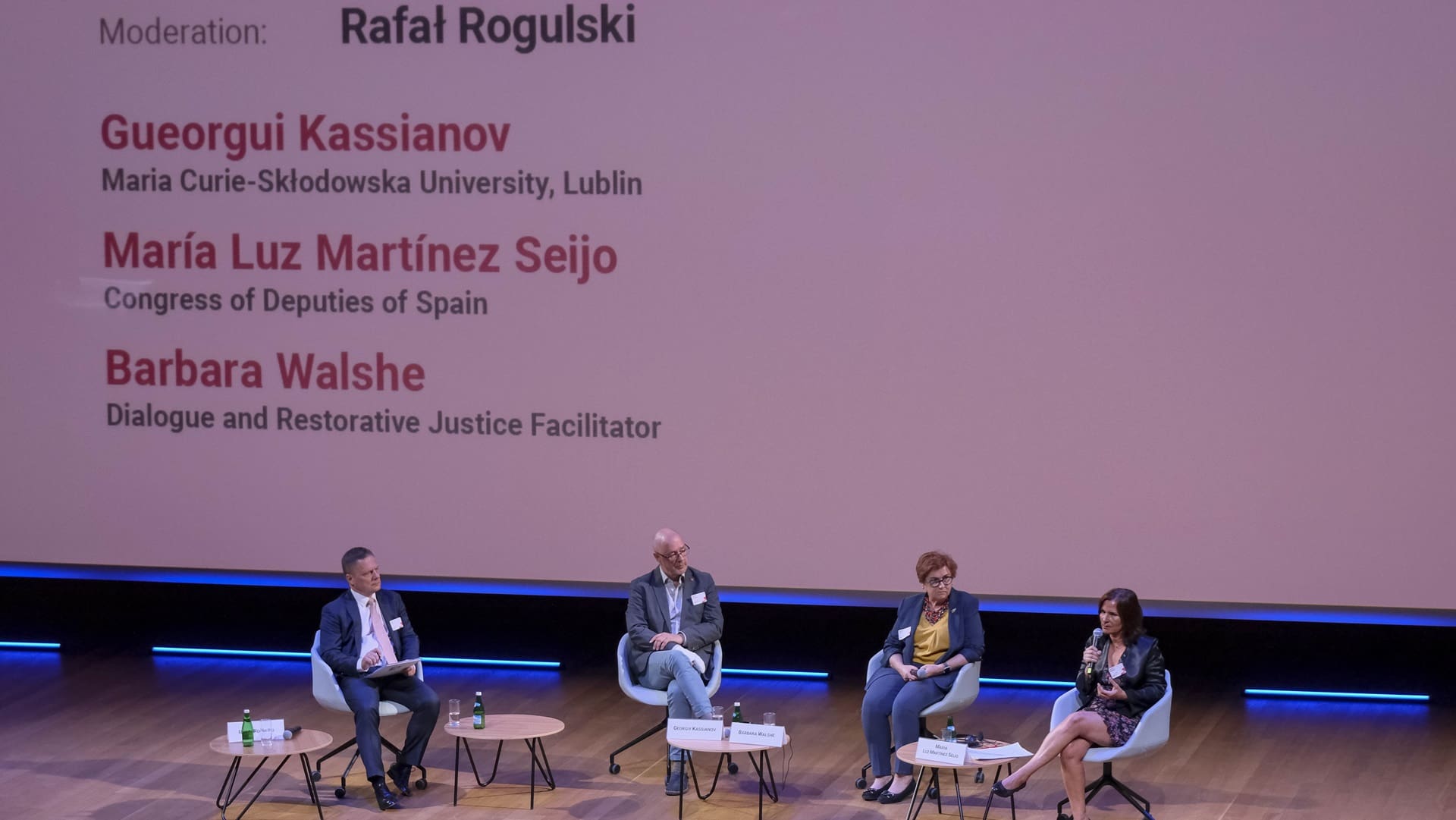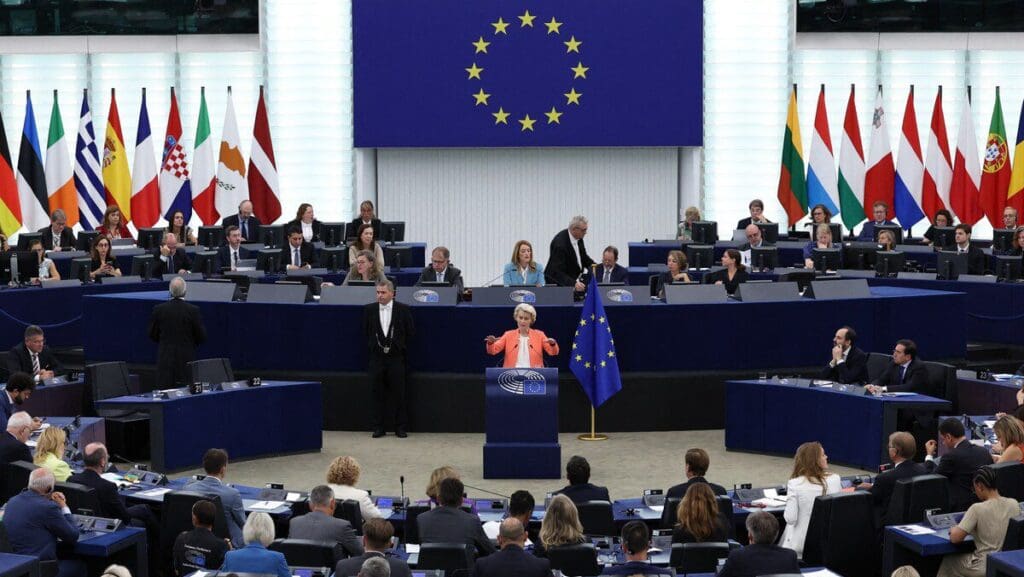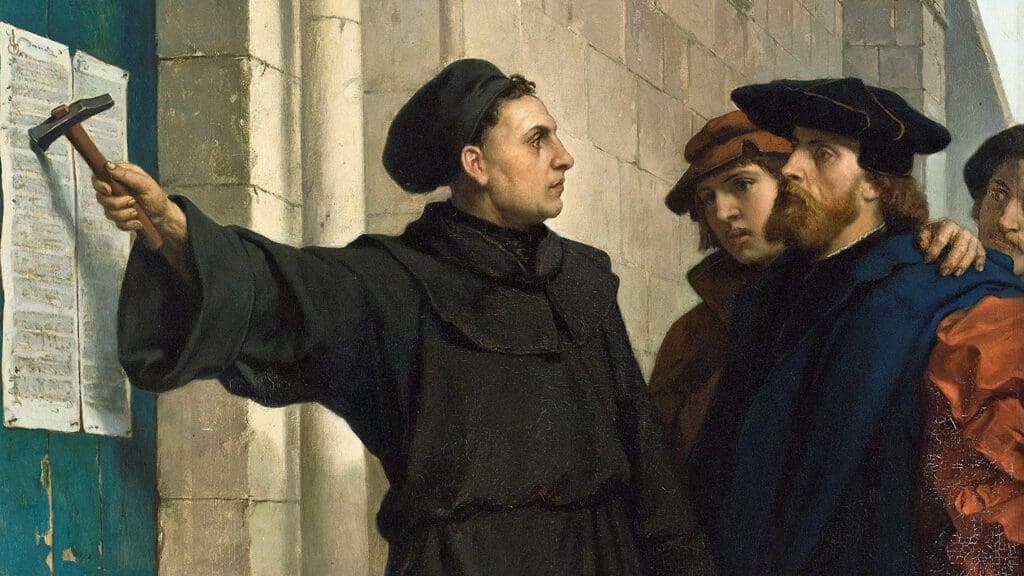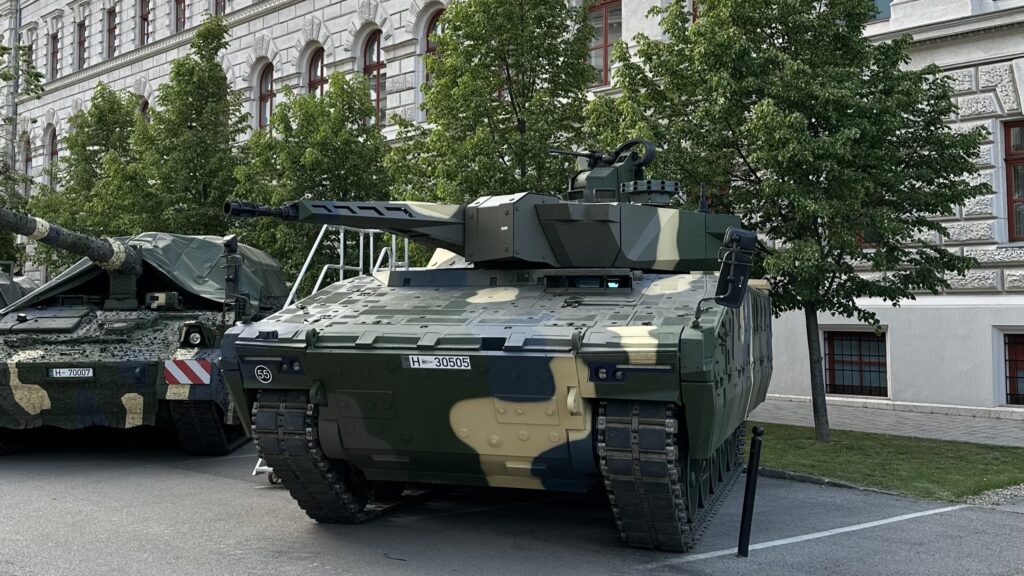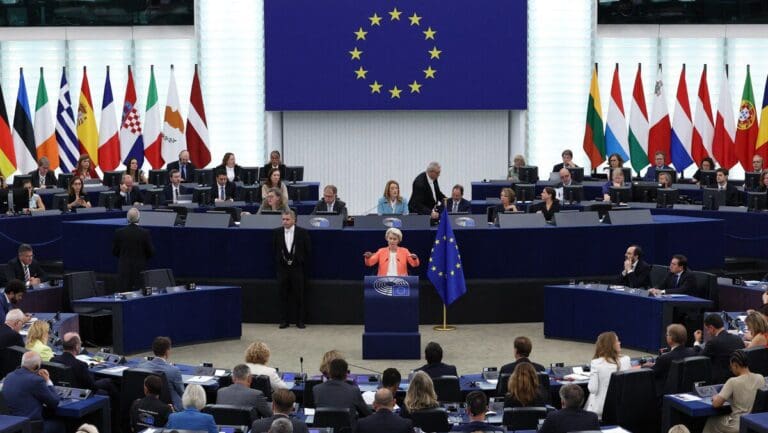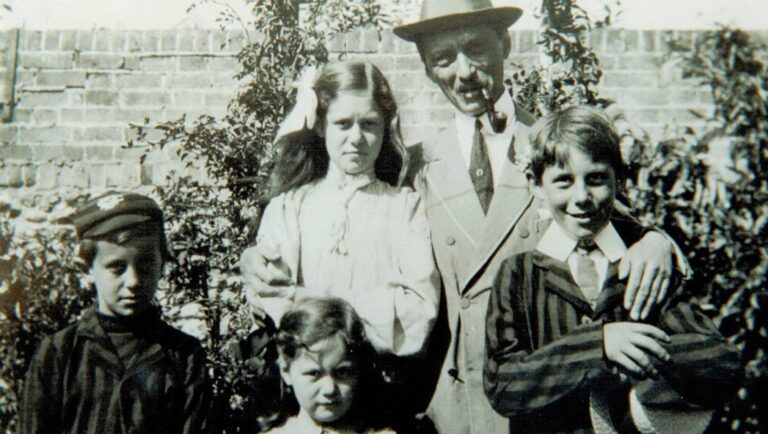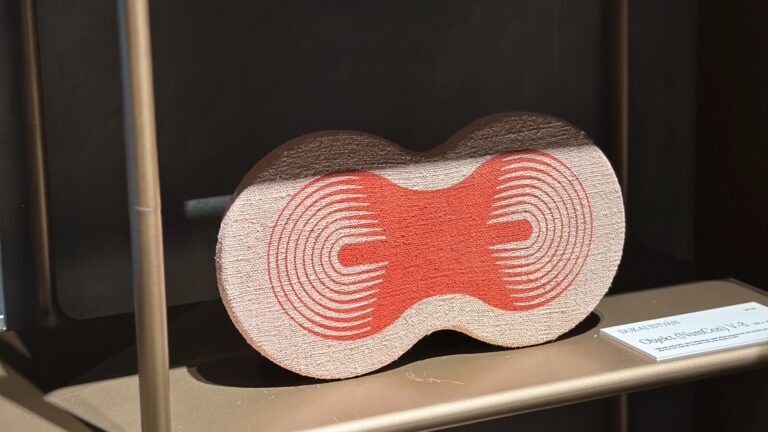The 12th European Remembrance Symposium is currently taking place in Warsaw, Poland on 21–24 May, organized by the European Network Remembrance and Solidarity (ENRS). Participants from all over Europe gathered at the Polish History Museum for three days of discussion about how to preserve and teach our national histories, as well as what it means to be free in today’s Europe.
The first panel of the two-day event was a debate titled Freedom as a Current Challenge for Public History and Civic Education. Georgiy Kasianov, a Ukrainian historian from the Maria Curie-Skłodowska University in Lublin, Poland; Maria Luz Martínez Seijo, Member of the Congress of Deputies of Spain; and Barbara Walshe, Dialogue and Restorative Justice Faciliator, Expertise Support at the ENRS took part in the fascinating discussion moderated by Rafał Rogulski of the European Network Remembrance and Solidarity.
Mr Kasianov started by stressing that his homeland of Ukraine is currently engaged in an ‘existential war’ as the aggressor side Russia is denying even its existence. In that context, the teaching of history is ‘securitized and weaponized’ by both sides. He noted that this new development can be observed in many other parts of the world as well. However, in Ukraine and Russia, it is to the extreme. With President Putin of Russia denying that Ukraine has a history, the Ukrainian government had to respond somehow, and they did so by teaching a more nationalistic narrative of history in public education. Since the 2014 occupation of Crimea by Russia, Crimean history has also been more prominently featured in the national curriculum.
‘I think Ukraine probably is the champion of Europe in the number of memory laws, and some of these laws have prescriptional power that turns the right to remember into duty to remember,’ Mr Kasianov explained. He later went on to say that
‘the teaching of history is a matter of national sovereignty’.
When asked about the European Union’s role in history education, Ms Seijo noted that there is no such treaty-mandated competence of the Union. However, she believes there is room for common history education for European nations, since all of them went through similar turbulences during their respective histories: times when their peoples’ freedoms were deprived, times when they had to suffer under an oppressive power. Overall, she believes that ‘there are more things that unite than separate us’ in that context.
Ms Walshe voiced her opinion that peace and the understanding of history are intertwined, and one cannot exist without the other. On the topic of international European cooperation, she stressed that international support is also needed for peace, as was the case for her home country of Ireland as well during its War of Independence in the early 20th century. She later went on to talk about the new, interactive ways of teaching the new generation their countries’ pasts, which could be done through creative arts, such as theatre performances as well.
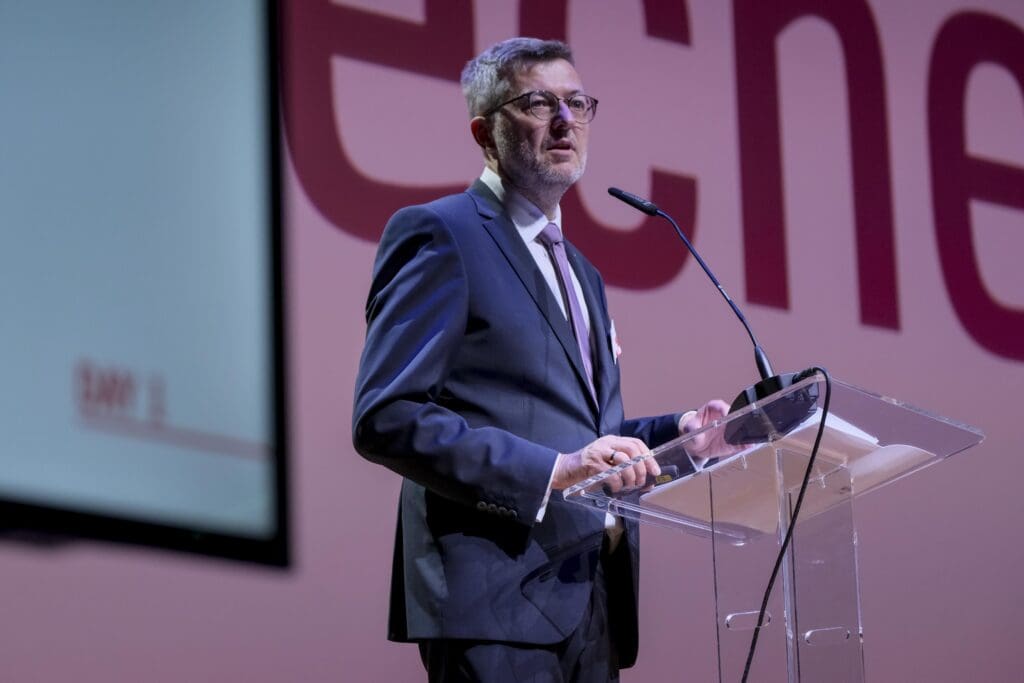
Near the end of the discussion, Mr Kasianov noted the intensifying global conflict between democracies and autocracies; one of the theatres of which is the ongoing Russo–Ukrainian war, he believes. Meanwhile, Ms Walshe lamented the increasingly aggressive political rhetoric and personal insults in politics which she thinks in part led to the recent assassination attempt against Prime Minister Robert Fico of Slovakia; and Ms Seijo stressed the importance of educating the new generations in preserving democracy.
Day 2 of the Symposium started with another panel discussion about the grand narratives and conceptualisations of freedom. Four speakers representing four museums or memorial sites were the participants: Simina Badica from the House of European History in Brussels, Belgium; Barbara Glück of the Mauthausen Memorial in Mauthausen, Austria; Audrey Whitty from the National Library of Ireland in Dublin, Ireland; and Robert Kostro from the host venue Polish History Museum in Warsaw, Poland. Dorottya Baczoni of the House of Terror Museum in Budapest, Hungary took on the role of moderator.
As Mr Kostro pointed out, freedom, the overarching topic of the conference, is also a heavily featured motive in his museum’s exhibitions as well; and a very important idea in Polish history. Poland actually elected its kings from the 16th to 18th century, as opposed to making the monarch a hereditary title, the explained the audience.
Ms Glück, representing the Mauthausen Memorial in memory of the local concentration camp, spoke of freedom in a more rudimentary sense, as in ‘freedom from captivity, slavery, and violence’. She then went on to talk about a Hungarian survivor of the camp, still alive today, who donated to the memorial his self-made chess board and pieces that helped him get through the horrors of the Holocaust.
Ms Badica described her institution as one dedicated to the ‘transnational history of Europe,’
where narrations for the exhibitions are available in all 24 official languages of the European Union. It has displays dedicated to the fight against communist oppression in the 1980s in the East; as well as the fight for ‘reproductive rights’ in the 1970s in the West of the continent. When asked about ‘grand narratives,’ the designated topic of discussion, Ms Badica noted that the phrase has a bit of a negative connotation, as it may imply that the curator is trying to guide the visitor to a conclusion. She, however, believes she puts multiple grand narratives on display in her museum side by side, in a ‘multi-perspective approach’; and she wants to encourage the museum-goers to engage in critical thinking on their own.
Ms Whitty talked about the history of the National Library of Ireland, which was established during British rule in 1877 as part of the effort by the Crown to ‘kill the Irish independence movement with kindness’. That, however, did not work out, and an independent Republic of Ireland was founded in 1937. Ireland has given four Nobel Prize winners in literature to the world. Of the four, Seamus Heaney’s work and memorabilia are prominently displayed in the library today. Another Irish literary great, James Joyce, best known for his 1922 novel Ulysses, used to read and write in the famous main reading room of the National Library, as the speaker pointed out. Later on, Ms Whitty also talked about the important role of the Irish diaspora, of which Joyce too was a part at times, had in shaping Irish culture and history.
Maria Axinte, one of the co-creators of the Museum of Communism for Children in Pitesti, Romania talked about her unique project started in 2022 in the subsequent series of presentations. Pitesti is where one of the most brutal prisons for political dissenters was operated under the communist regime in Romania. Ms Axinte explained that one of the ways to get young children to understand how the communist system worked is to have them vote if they want an interactive or lexical learning experience, then ‘rig the vote the way the communist did’ in favour of the lexical one, which children tend not to choose. The minimum age requirement is 12 years in the exhibition, which also happens to to be the age of the youngest political prisoner held captive in communist Romania.
Meanwhile, Florian Traussnig of the Ludwig Boltzmann Institute spoke of the about 100 ‘refugee soldiers’ from Austria, who served in the 10th Mountain Division of the US Army during World War II. They were experienced skiers who fled the Nazi regime in their home country after the Anschluss (not all of them were Jewish, some of them were just anti-Nazi), and helped their new American comrades train for warfare in the cold, high mountain terrain in Europe.
Related articles:

